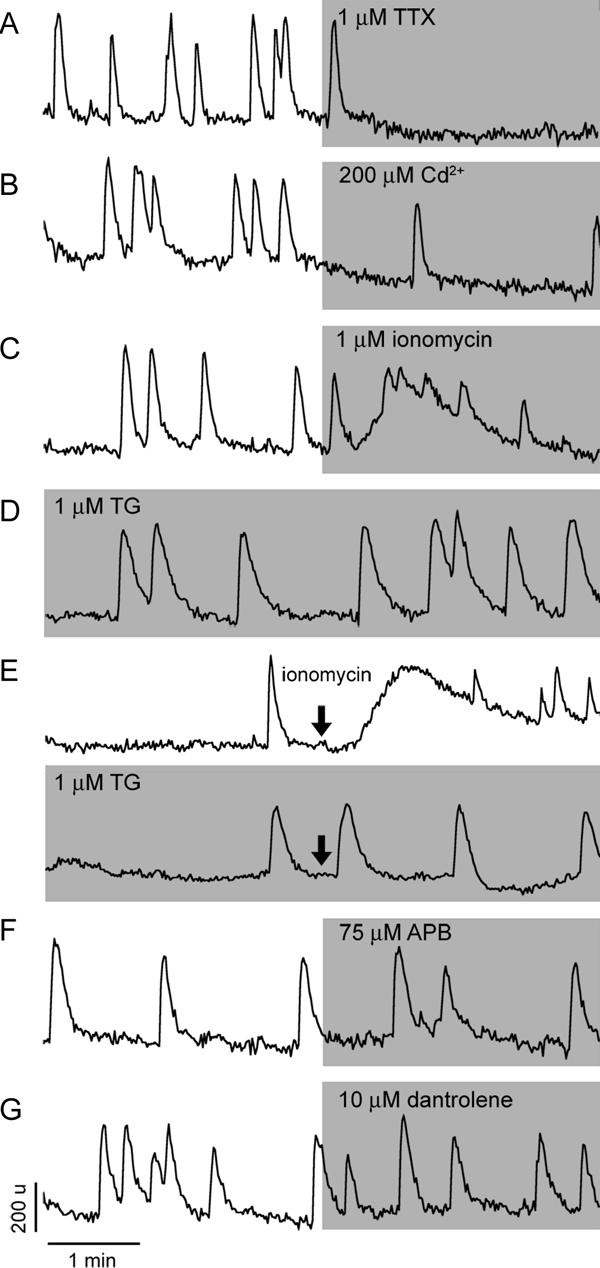Figure 2.

Characterization of spontaneous calcium oscillations in GnRH-1 neurons. A, Effects of TTX, a specific sodium channel blocker, on baseline calcium oscillations. Inhibition of calcium oscillations was observed in all spontaneously active GnRH-1 neurons. B, Effects of cadmium, a nonselective calcium channel blocker, on the frequency of calcium spiking. In a fraction of cells, cadmium abolished baseline calcium oscillations. C, Effects of a calcium ionophore ionomycin, which preferentially releases calcium from the ER, on spontaneous calcium oscillations. Note the low amplitude of calcium response and the persistence of fluctuations in [Ca2+]i in the presence of ionomycin, indicating the independence of calcium oscillations from the status of the ER calcium pool. D, Spontaneous calcium oscillations persist after depletion of the ER calcium pool by inhibition of (Ca2+)ATPases with TG. Note changes in the intraspike areas in TG-treated cells. E, Evaluation of the efficiency of TG treatment, example records showing the ability of ionomycin to elevate [Ca2+]i in controls (top panel) but not in TG-treated cells (bottom panel). The lack of effects of 2-APB, a blocker of IP3Rs (F), and dantrolene, an inhibitor of RyRs (G), on baseline calcium oscillations are shown. In this and following figures, vertical and horizontal bars represent respectively units of OD and time, and gray areas indicate duration of treatments.
